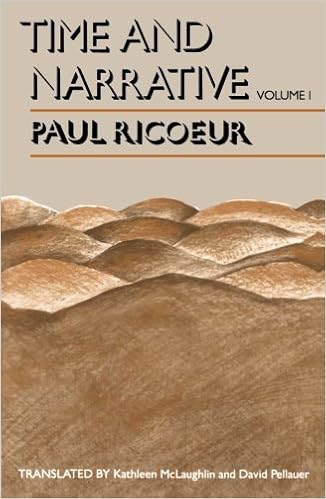
By David Woodruff Smith
This moment variation of David Woodruff Smith’s stimulating creation to Husserl has been absolutely up-to-date and incorporates a new 9th bankruptcy that includes modern concerns confronting Husserl’s phenomenology. It introduces the total of Edmund Husserl’s suggestion, demonstrating his effect on philosophy of brain and language, on ontology and epistemology, in addition to moral thought, and on philosophy of common sense, arithmetic, and science.
Starting with an outline of Husserl’s existence and works, and his position in twentieth-century philosophy and in Western philosophy as an entire, Smith introduces Husserl’s notion of phenomenology, explaining Husserl’s leading edge theories of intentionality, objectivity, subjectivity, and intersubjectivity. In next chapters Smith covers Husserl’s common sense, metaphysics, realism and transcendental idealism, epistemology, and (meta)ethics. eventually, the writer assesses the importance and implications of Husserl’s paintings for modern philosophy of brain and cognitive science.
Also incorporated is a timeline, thesaurus, and large feedback for extra studying, making Husserl, second version, crucial analyzing for someone attracted to phenomenology, twentieth-century philosophy, and the continued effect of this eminent philosopher.
Read Online or Download Husserl (The Routledge Philosophers) PDF
Similar Phenomenology books
Time and Narrative, Volume 1 (Time & Narrative)
Time and Narrative builds on Paul Ricoeur's previous research, within the Rule of Metaphor, of semantic innovation on the point of the sentence. Ricoeur the following examines the construction of that means on the textual point, with narrative instead of metaphor because the ruling problem. Ricoeur reveals a "healthy circle" among time and narrative: time is humanized to the level that it portrays temporal event.
Phenomenology, including Marxism, pragmatism, and analytic philosophy, ruled philosophy within the 20th century—and Edmund Husserl is generally notion to were the 1st to advance the idea that. His perspectives stimulated quite a few vital later thinkers, corresponding to Heidegger and Merleau-Ponty, who finally became phenomenology clear of questions of data.
The philosophical paintings of Jean-Luc Marion has opened new methods of conversing approximately spiritual convictions and studies. during this exploration of Marion’s philosophy and theology, Christina M. Gschwandtner offers a complete and demanding research of the guidelines of saturated phenomena and the phenomenology of givenness.
Extra info for Husserl (The Routledge Philosophers)
We are going to go back to wholes, components, and dependence. no matter what is going at the checklist of formal ontological different types, the idea is that the kinds indexed observe to all domain names of items. particularly, Husserl’s assumption is that the kinds – person, estate, scenario, quantity, and so forth – follow to any area below any of the areas Nature, recognition, and tradition. (If this assumption proves too powerful, the top thought continues to be that formal different types practice to numerous fabric different types, despite the fact that those be ordered. See the contrasting classification schemes studied in D. W. Smith 2004. ) in response to Husserl’s epistemology, we clutch essences via abstraction, sifting via attainable situations for shared essences and thereby coming to “see” what's shared. yet formal and fabric essences are grasped by way of varieties of abstraction. In generalization we grab a shared fabric essence, a species or genus (Ideas I, §12) at a few point of generality, say, Tree or Plant or fabric factor, that's, factor in Nature. In formalization, in contrast, we take hold of a shared formal essence at a few point of ritual, say, person (Substrate), estate, situation, or quantity. Generalization is practiced in way of life as we glance for generalities (Knife, Fork, Spoon, and Chopstick are species 148 Husserl below consuming Utensil). In a extra theoretical vein we perform generalization in empirical technological know-how as we glance for greater theoretical generalities (in biology we discover: Eukarya, Animalia, . . . , Mammalia, . . . , Homo, Homo Sapiens). against this, we perform formalization in arithmetic and good judgment as we glance for formal constructions present in mathematics, geometry, calculus, mathematical common sense, and laptop technological know-how, say, quantity, Set, Manifold, crucial, Decidability, set of rules, and so forth. (See rules I, §13 at the distinction among formalization and generalization. ) “Syntactic” different types and “substrates” in the area of items total, Husserl writes (§11), there's an enormous contrast among what he calls “syntactic varieties” and “syntactic substrates,” or “stuffs” that fill the varieties. there's hence an immense “formal-ontological” contrast among syntactic different types and substrate different types. In an Aristotelian idiom we would say that, of their “syntactic” shape, substrates (primary components) are the final word bearers of essences (universals), the place essences are predicable of or borne by means of substrates yet substrates aren't predicable of something. those formal different types “mirror” (widerspiegeln) the “pure-grammatical” contrast within the formal idea of that means, the excellence among predicative options and person options, that are expressible, respectively, by means of predicates and singular phrases equivalent to names and pronouns. In good judgment, syntax is outlined because the idea of the different types of expressions in a language, or for Husserl the corresponding varieties of meanings. hence, the syntactic kind of a sentence is composed within the shapes and order of symbols happening within the sentence, together with their forming phrases.



